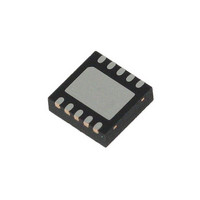L6728DTR STMicroelectronics, L6728DTR Datasheet - Page 10

L6728DTR
Manufacturer Part Number
L6728DTR
Description
IC PWM CTLR 1PH POWERGOOD 10DFN
Manufacturer
STMicroelectronics
Datasheet
1.L6728DTR.pdf
(33 pages)
Specifications of L6728DTR
Pwm Type
Voltage Mode
Number Of Outputs
1
Frequency - Max
330kHz
Duty Cycle
80%
Voltage - Supply
5 V ~ 12 V
Buck
Yes
Boost
No
Flyback
No
Inverting
No
Doubler
No
Divider
No
Cuk
No
Isolated
No
Operating Temperature
-40°C ~ 125°C
Package / Case
10-DFN
Frequency-max
330kHz
Duty Cycle (max)
80 %
Mounting Style
SMD/SMT
Switching Frequency
300 KHz
Operating Supply Voltage
5 V to 12 V
Supply Current
6 mA
Lead Free Status / RoHS Status
Lead free / RoHS Compliant
Other names
497-10432-2
Available stocks
Company
Part Number
Manufacturer
Quantity
Price
Driver section
6
6.1
10/33
Driver section
The integrated high-current drivers permit the use of different types of power MOSFETs
(also multiple MOSFETs to reduce the equivalent R
transition.
The driver for the high-side MOSFET uses the BOOT pin for supply and the PHASE pin for
return. The driver for low-side MOSFET uses the VCC pin for supply and the GND pin for
return.
The controller embodies an anti-shoot-through and adaptive dead-time control to minimize
low side body diode conduction time, maintaining good efficiency while eliminating the need
for a Schottky diode:
●
●
If the current flowing in the inductor is negative, voltage on the PHASE pin will never drop.
To allow the low-side MOSFET to turn on even in this case, a watchdog controller is
enabled. If the source of the high-side MOSFET does not drop, the low side MOSFET is
switched on, thereby allowing the negative current of the inductor to recirculate. This
mechanism allows the system to regulate even if the current is negative.
Power conversion input is flexible: 5 V, 12 V bus or any bus that allows the conversion (see
maximum duty cycle limitations) to be chosen freely.
Power dissipation
The L6728D embeds high current MOSFET drivers for both high side and low side
MOSFETs. It is therefore important to consider the power that the device is going to
dissipate in driving them, in order to avoid overcoming the maximum junction operating
temperature.
Two main factors contribute to device power dissipation: bias power and driver power.
●
●
to check the high-side MOSFET turn-off, the PHASE pin is sensed. When the voltage
at the PHASE pin drops, the low-side MOSFET gate drive is suddenly applied
to check the low-side MOSFET turn-off, the LGATE pin is sensed. When the voltage at
LGATE has fallen, the high-side MOSFET gate drive is suddenly applied
Device bias power (P
supply pins, and is quantifiable as follows (assuming HS and LS drivers with the same
VCC of the device):
Driver power is the power needed by the driver to continuously switch on and off the
external MOSFETs. It is a function of the switching frequency and total gate charge of
the selected MOSFETs. It can be quantified considering that the total power P
dissipated to switch the MOSFETs (easily calculable) is dissipated by three main
factors: external gate resistance (when present), intrinsic MOSFET resistance and
intrinsic driver resistance. This last factor is the most important one to be determined to
calculate the device power dissipation. The total power dissipated to switch the
MOSFETs is:
P
SW
DC
=
) depends on the static consumption of the device through the
F
P
Doc ID 16498 Rev 1
SW
DC
⋅
=
(
Q
V
gHS
CC
⋅
⋅
(
V
I
CC
BOOT
DS(on)
+
I
BOOT
+
), maintaining fast switching
Q
gLS
)
⋅
V
CC
)
SW
L6728D














